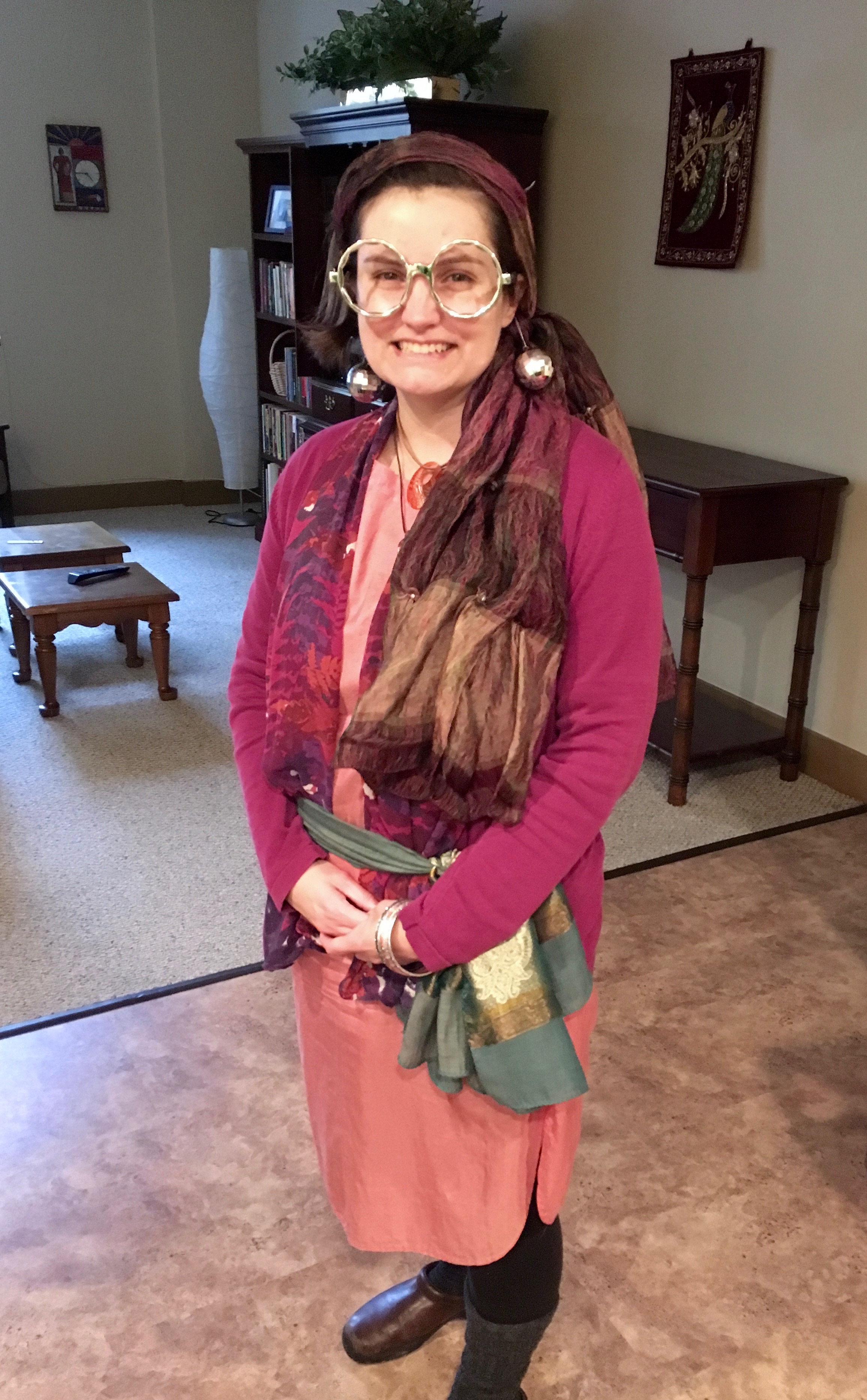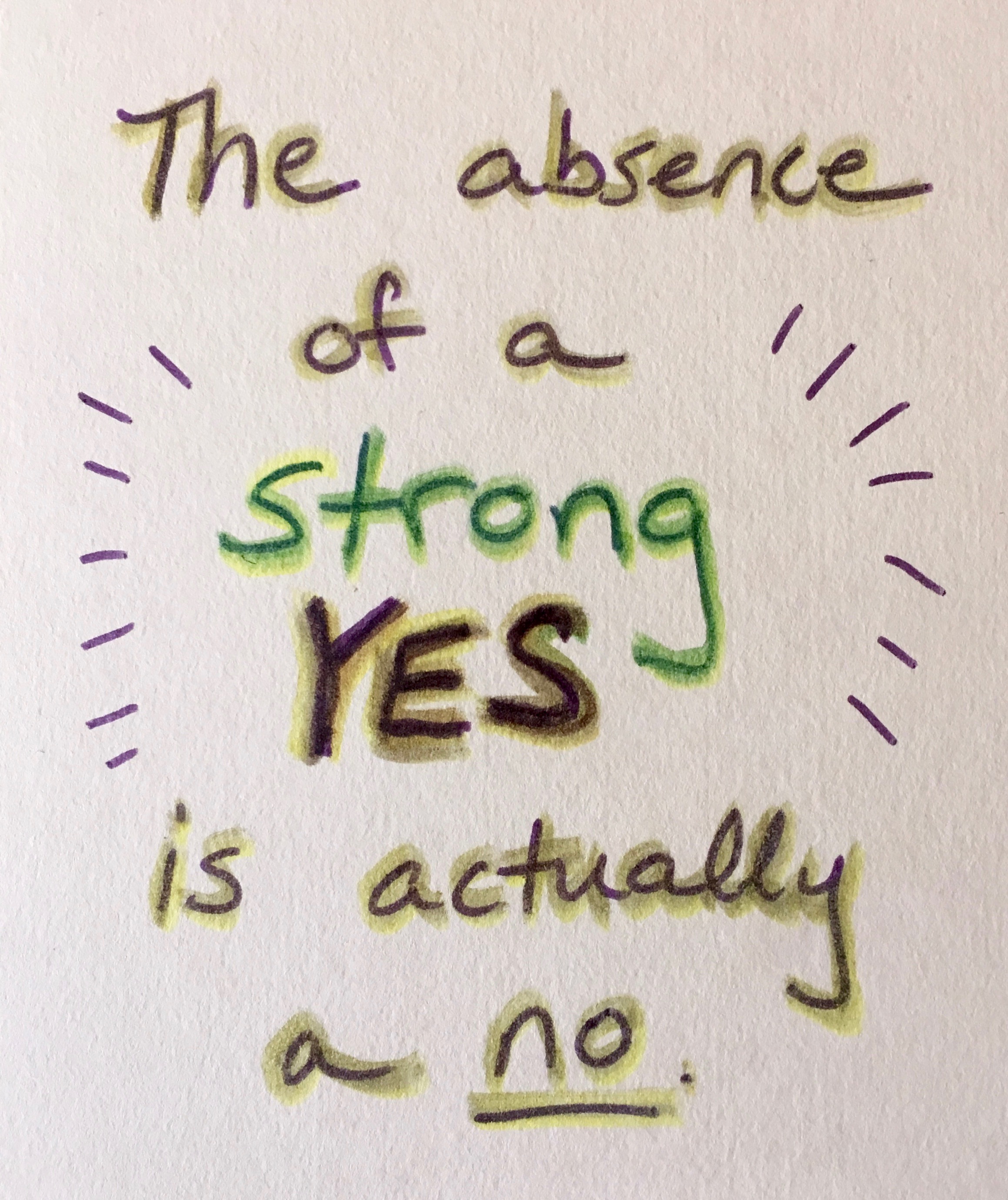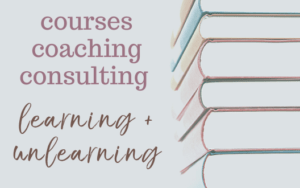For Halloween, I dressed as Professor Sybill Trelawney, a professor of divination at Hogwarts (within the world of Harry Potter). This has been a favorite costume of mine in past years, because I like to fashion myself the absent-minded professor. This year I’m thinking about how I’m drawn to Trelawney because she fits the archetype of the dreamer, seer, and intuitive.
Why Study and Embrace Archetypes?
Archetypes are helpful for seeing qualities and narratives that we carry within/about ourselves. Identifying archetypes helps us explore what we’re drawn to and why and, conversely, what we’re repelled by and why. Like other self-exploration, reflection on archetypes brings additional clarity about who we are and who we want to be. And such clarity helps with becoming our best selves.
Clarity emerges for me this week in the midst of Halloween, Samhain, Día de Muertos, All Saints Day, and the Full Moon in Taurus. I find myself embracing divination through the seasonal invitation for deeper introspection in dark days. As I embrace divination (and the role of intuitive dreamer), I find myself tracing the many ways I divine meaning from everyday life.
What’s Divination Involve?
What I’ve learned (and I’m still learning) is that there are numerous signs and signals in everyday life that help us make sense of the world and how we participate in it. These signals include embodied responses and emotional literacies. They come through moving the body or dreaming in sleep, through practicing daily habits or enacting holiday rituals. They can arise in imperfect meditation, yoga practice, or even troubling interactions.
Like an ethnographer, to find meaning, I identify recurring themes or patterns and also attend to outliers, or those bits of information that seem not to fit the pattern. I look for the repetition of thoughts, feelings, and physical sensations. I listen for the repetition of words, phrases, and ideas. And I remain curious about the messages these repetitions convey, using online tools and contemplative writing to identify symbolic meanings.
Perhaps the best divination tool I’ve found comes from my Reiki teacher, Marty Tribble, who says, “The absence of a strong YES is actually a no.” For years, I’ve learned how to talk myself into things, how to weigh rationale arguments, and how to make the best-informed decision based on others’ advice. And for years, I’ve gotten myself into trouble whenever doing something because I “should.”
Instead, the more that I listen for my strong YES—the sense that, yes, I want to do this thing, or, yes, this feels like it’s directing me toward ease/joy/love—the more I’m emerging as myself.
Why Claim an “Everyday Divination” Practice?
I know that divination invokes jokes in popular culture about false prophets and fortune-tellers, and Professor Trelawney’s character embodies frequent critiques that divining meaning is full of fluff, falsehoods, and fantasy. Yet, as I fashion myself a “professor of divination” and embrace the related archetype, I hope to share the possibilities of learning to live more intuitively, more in line with divine guidance.
Truly, there is so much to learn from everyday life. The more I open to my full senses—my heart, head, and hands—the more I learn my strong YES. And the more I follow the YES, the more I remain true to myself and to my commitment to justice.
*****
Interested in listening to this blog post?
Check out my SoundCloud account, and subscribe for new audio content.
—
This post is written by Beth Godbee, Ph.D. for Heart-Head-Hands.com. For more posts like this one, you might try “Disrupting the Mind-Body Split” and “Imperfect Meditation and the Desire to ‘Slow Way Down.’”
Interested in support for finding your own “strong yes”? I offer one-with-one coaching through online courses, including “Career Discernment for Academics: Aligning Career with Commitments.”
Join me on Patreon for additional monthly content. And consider subscribing to the newsletter and liking this blog on FB. Thanks!





Thank you!
Sending love.